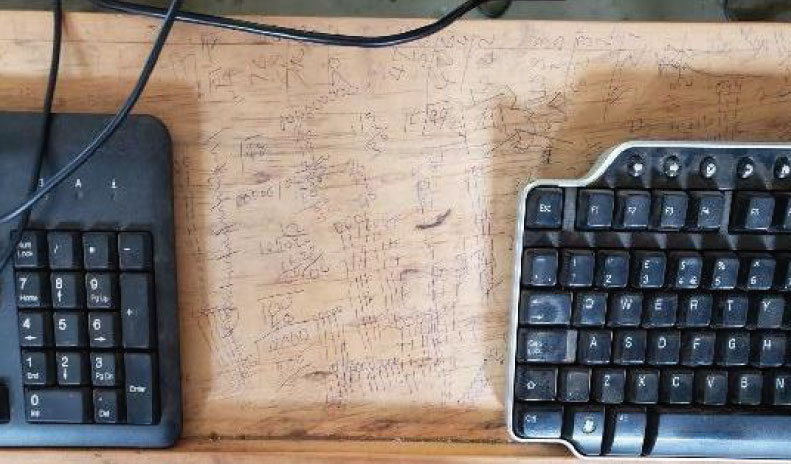A picture paints a thousand words, we’re told. What does this picture – snapped during a recent field visit to rural Kenya – tell you?

For us, it is first and foremost a sobering reminder of the realities of the classroom in parts of the world. The unmistakable desk scrawlings are an inevitable consequence of the paperless classroom. In rural Kenya, the paucity of writing paper is due not to environment-conscious educational policy but the simple fact that these schools cannot afford such resources.
The technocentric view may hold that paper is a crusty relic of centuries past, and that the digital medium should suffice in enabling all forms of student expression. This view is short-sighted because it expects too much of the human brain. Our brains are not optimised for storage; our working memory (the conscious elements of thinking) is limited to just a few items which means that we need some way to jot our thoughts down when processing several pieces of information at once. When a student carries out multi-step problems, therefore, they need some place to store the intermediate results that is situated outside of their own heads. The scrawlings we see above are in tune with how, for millenia, humans have stored knowledge in their physical environment, as a way of augmenting their intelligence beyond the physiological constraints of body and mind.

An important direction for AI is to grasp more of students’ thinking processes as they interact with digital content. Analytics – the cherished data upon which so many key implementation and policy decisions rest – are heavily premised on learning outputs; what students can both demonstrate they know and can do. The missing piece, captured by those scrawlings, is also the messiest: it is the rhyme and reason of how students are led to a particular response. ‘Show your working’ is a timeless edict for students the world over.
Of course, technology may evolve to a point where it emulates all the affordances of paper. Virtual reality, if you believe the hype, may transport students to whole new realms of expression. Until then, we need to consider every facet of the learning experience – the part that is happening offline as well as online, on paper as well as on-screen.
